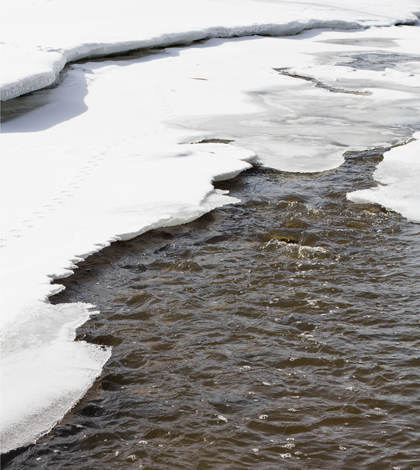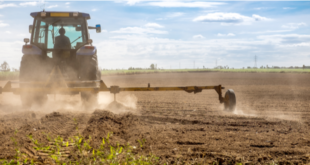Frank Gehrke, chief of the California Cooperative Snow Surveys Program, and Karla Nemeth, Department of Water Resources director, jointly conducted the April snow survey at Phillips Station snow course in the Sierra Nevada range on Monday and found the statewide mountain snowpack increased from 23 percent of the March 1 average to 52 percent of the April 1 historical average.
“Despite recent storms, today’s snow survey shows that we’re still playing catch-up when it comes to our statewide water supplies,” said Gehrke. “While today’s snow survey determined that the water content is much higher than February, the state will remain well below average for the year.”
The snow survey conducted Gehrke and Nemeth found a snow water equivalent (SWE) of 12.4 inches, or 49 percent of average for this time of year as recorded since 1964. SWE is the amount of water contained within the snowpack. SWE is the theoretical equivalence that would occur if the entire snowpack melted instantaneously and completely. The measurement is the more important statistic in evaluating the status of snowpack versus its depth.
The Phillips snow course, near the intersection of Highway 50 and Sierra-at-Tahoe Road, is one of approximately 260 that are surveyed manually throughout the winter. Manual measurements augment the electronic readings from the snow pillows in the Sierra Nevada that provide a current snapshot of the water content in the snowpack. DWR also logs electronic readings from 103 stations scattered throughout the Sierra.
In addition to the manual measurement at Phillips Station on Monday, a manual measurement done at Tamarack Flat in Yosemite National Park showed a snow depth of 38.8 inches, with a water content of 16.7 inches and measuring 60 percent of the long-term average. Phillips Station’s snow depth was measured at 32.1 inches and 12.4 inches of water content.
Electronic measurements indicate the SWE of the northern Sierra snowpack is 11.8 inches, 43 percent of the multi-decade average for today’s date. The central and southern Sierra readings are 17.6 inches (60 percent of average) and 12.9 inches (50 percent of average) respectively. Statewide, the snowpack’s SWE is 14.6 inches, or 52 percent of the April 2 average. Electronic snowpack readings are available at: http://bit.ly/2rVa84a.
The California snowpack normally provides about a third of the water needed for the state’s farms and communities as it melts in the spring and summer and fills reservoirs and rivers. Although the precipitation statewide has been below average as of Monday’s measurements, California’s exceptionally high precipitation last winter and spring resulted in above-average storage in 154 reservoirs tracked by the DWR. The DWR estimates total storage in these reservoirs at the end of March was 28.2 million acre-feet (MAF), or 107 percent of the 26.4 MAF average for this time of year.
“These snowpack results – while better than they were a few weeks ago – still underscore the need for widespread careful and wise use of our water supplies,” said DWR’s Nemeth. “The only thing predictable about California’s climate is that it’s unpredictable. We need to make our water system more resilient so we’re prepared for the extreme fluctuations in our water system, especially in the face of climate change.”
 California Water News Daily Your Source For Water News in California
California Water News Daily Your Source For Water News in California


